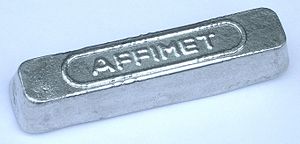The physical practice of warehousing ingots only makes sense (in the world of non-financiers, at least) if you’re a manufacturer that uses the metals and the warehouses are near your factories. Otherwise, the practice is a derivative whose reality is a little more complicated. In the case of these ingots, the waiting time in the queue to get your metals (the financiers store not only aluminum, but also copper, tin, lead, nickel, and zinc) into one of these warehouses for storage (or from one warehouse to another warehouse {these are owned by and/or allocated to different financiers)} is approximately 2 days; the waiting time to have your metals removed from one of these warehouses (for transport to your manufacturing facility) is approximately 18 months. With average storage fees of more than $0.50 per ton of metal per day, with these warehouses holding about 80% of the world’s ingots of these metals, and with financiers owning essentially all of these warehouses, this is, depending upon one’s point of view, an astute exercise in hedging or an unethical business practice of a cartel. Regardless of one’s point of view, one thing is certain. Current practices will invite observation of these practices with an eye toward increased and/or independent regulatory oversight.
How does one make money from this? (1) The storage fees alone add about $270/ton to the price of the ingots. …or more than $6 billion/year. (2) By bottle-necking supply by purchase and warehousing that is crucial to many other industries, financiers have exploited two more sets of advantages with respect to information asymmetry involving markets in general. … or $ ? / year.
Also, see http://online.wsj.com/public/resources/documents/weiner072313.pdf .
Related articles
Related articles





